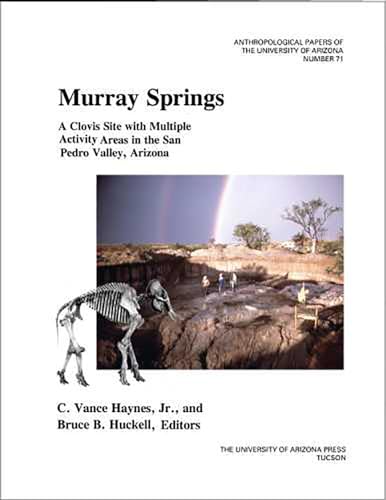The Murray Springs Site in the upper San Pedro River Valley of southeast Arizona is one of the most significant Clovis sites ever found. It contained a multiple bison kill, a mammoth kill, and possibly a horse kill in a deeply stratified sedimentary context. Scattered across the buried occupation surface with the bones of late Pleistocene animals were several thousand stone tools and waste flakes from their manufacture and repair. Because of the unique occurrence of an algal black mat that buried the Clovis-age surface immediately after abandonment, the distributional integrity of the artifacts and debitage clusters is exceptional for Paleoindian sites. Excavation of the Clovis hunters’ camp 50 to 150 meters south of the kills revealed artifactual evidence typical of hunting camp activity, including hide working and weapons repair. Impact flakes conjoining with Clovis points clearly tied the camp to the bison kill. The unique nature of the site and this comprehensive study of the excavated material constitute one of the most important contributions to our knowledge of Paleoindian hunters in the New World.






